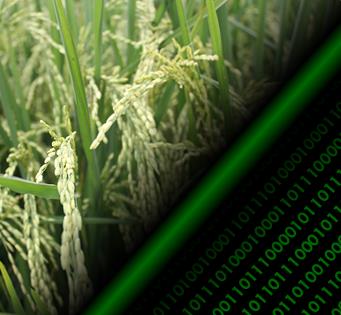Multi metric evaluation of leaf wetness models for large-area application of plant disease models.
 |
2011 - Agricultural and Forest Meteorology, 151, 1163-1172 |
 |
Bregaglio, S., Donatelli, M., Confalonieri, R., Acutis, M., Orlandini, S. |
Abstract:
Leaf wetness (LW) is one of the most important input variables of disease simulation models because of its fundamental role in the development of the infection process of many fungal pathogens. The low reliability of LW sensors and/or their rare use in standard weather stations has led to an increasing demand for reliable models that are able to estimate LW from other meteorological variables. When working on large databases in which data are interpolated in grids starting from weather stations, LW estimation is often penalized by the lack of hourly inputs (e.g., air relative humidity and air temperature), leading researchers to generate such variables from the daily values of the available weather data.
Although it is possible to find several papers about models for the estimation of LW, the behavior and reliability of these models were never assessed by running them with inputs at different time resolutions aiming at large-area applications. Furthermore, only a limited number of papers have assessed the suitability of different LW models when used to provide inputs to simulate the development of the infection process of fungal pathogens. In this paper, six LW models were compared using data collected at 12 sites across the U.S. and Italy between 2002 and 2008 using an integrated, multi metric and fuzzy-based expert system developed ad hoc. The models were evaluated for their capability to estimate LW and for their impact on the simulation of the infection process for three pathogens through the use of a potential infection model. This study indicated that some empirical LW models performed better than physically based LW models. The classification and regression tree (CART) model performed better than the other models in most of the conditions tested. Finally, the estimate of LW using hourly inputs from daily data
led to a decline of the LW models performances, which should still be considered acceptable. However, this estimate may require further work in data collection and model evaluation for applications at finer spatial resolutions aimed at decision support systems.
Although it is possible to find several papers about models for the estimation of LW, the behavior and reliability of these models were never assessed by running them with inputs at different time resolutions aiming at large-area applications. Furthermore, only a limited number of papers have assessed the suitability of different LW models when used to provide inputs to simulate the development of the infection process of fungal pathogens. In this paper, six LW models were compared using data collected at 12 sites across the U.S. and Italy between 2002 and 2008 using an integrated, multi metric and fuzzy-based expert system developed ad hoc. The models were evaluated for their capability to estimate LW and for their impact on the simulation of the infection process for three pathogens through the use of a potential infection model. This study indicated that some empirical LW models performed better than physically based LW models. The classification and regression tree (CART) model performed better than the other models in most of the conditions tested. Finally, the estimate of LW using hourly inputs from daily data
led to a decline of the LW models performances, which should still be considered acceptable. However, this estimate may require further work in data collection and model evaluation for applications at finer spatial resolutions aimed at decision support systems.
 |
Keywords: Fuzzy logic, composite metrics, disease potential infection, hourly values, weather variables |
 |
DOI: 10.1016/j.agrformet.2011.04.003 |
- Comparison of three calibration methods for modeling rice phenology
- A simple pipeline for the assessment of legacy soil datasets: An example and test with soil organic carbon from a highly variable area.
- A high-resolution, integrated system for rice yield forecasting at district level.
- Downscaling rice yield simulation at sub-field scale using remotely sensed LAI data.
- Analysis and modelling of processes involved with salt tolerance and rice.
- Estimating crop nutritional status using smart apps to support nitrogen fertilization. A case study on paddy rice.
- Development of generic crop models for simulation of multi-species plant communities in mown grasslands.
- Quantifying uncertainty due to stochastic weather generators in climate change impact studies
- Predicting rice blast disease: machine learning versus process-based models
- Boundaries and perspectives from a multi-model study on rice grain quality in Northern Italy.




